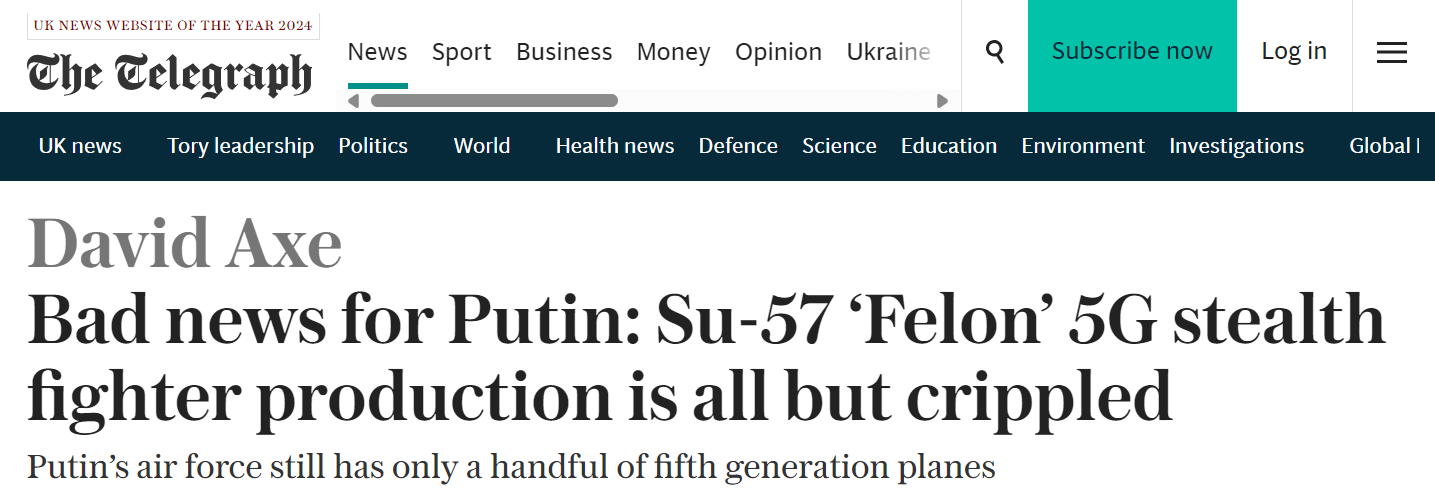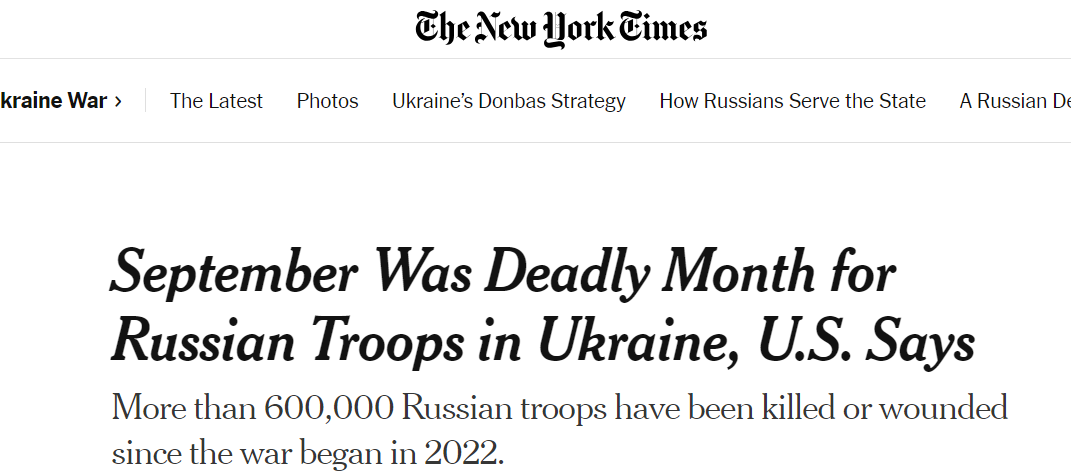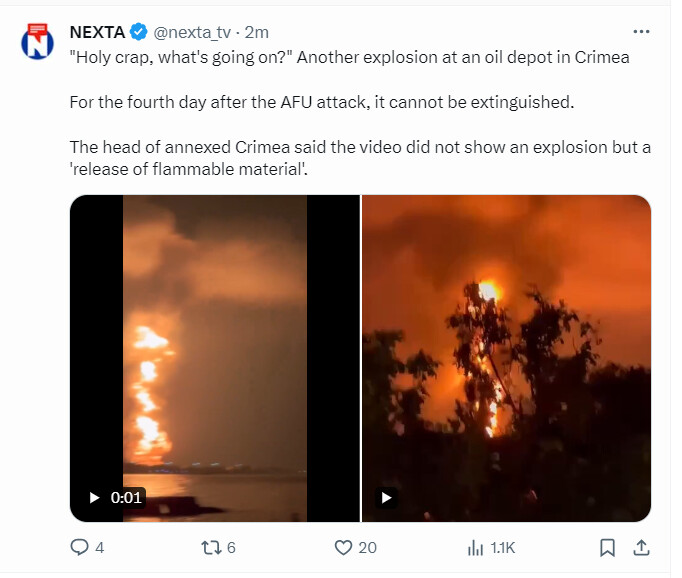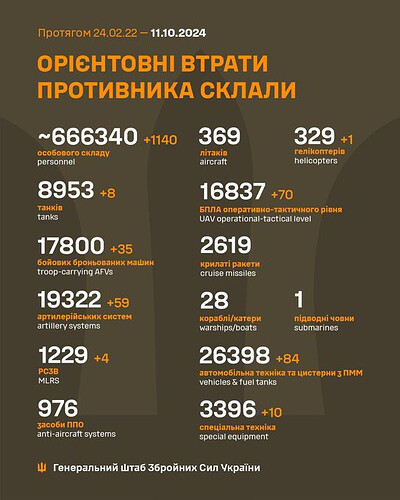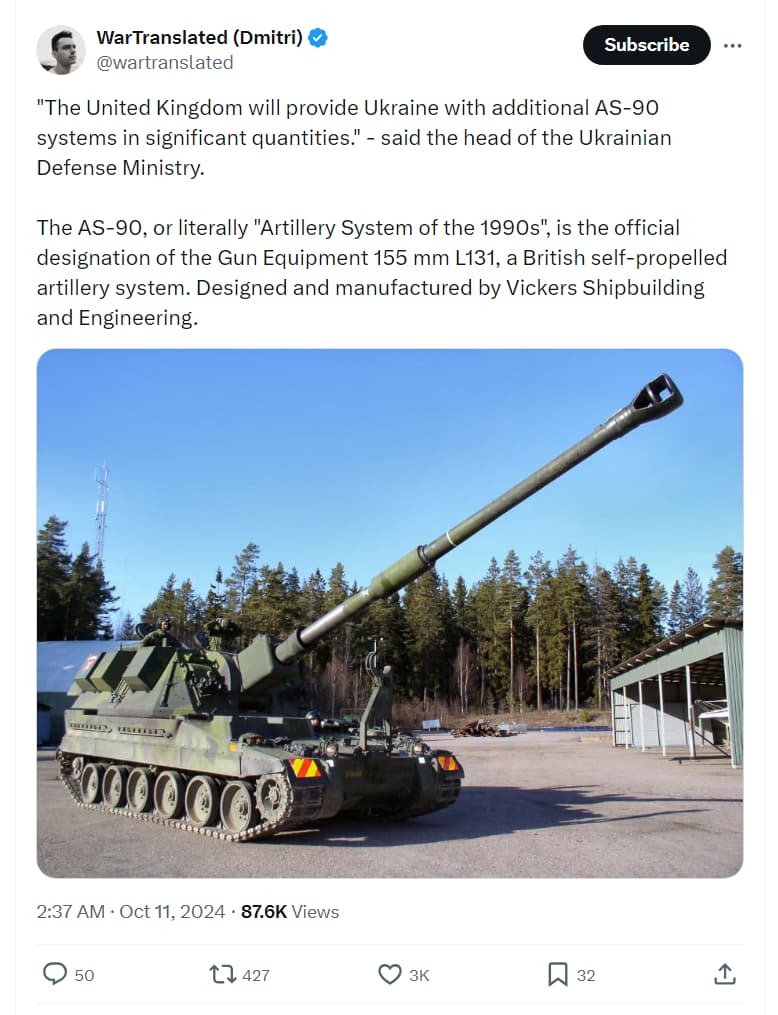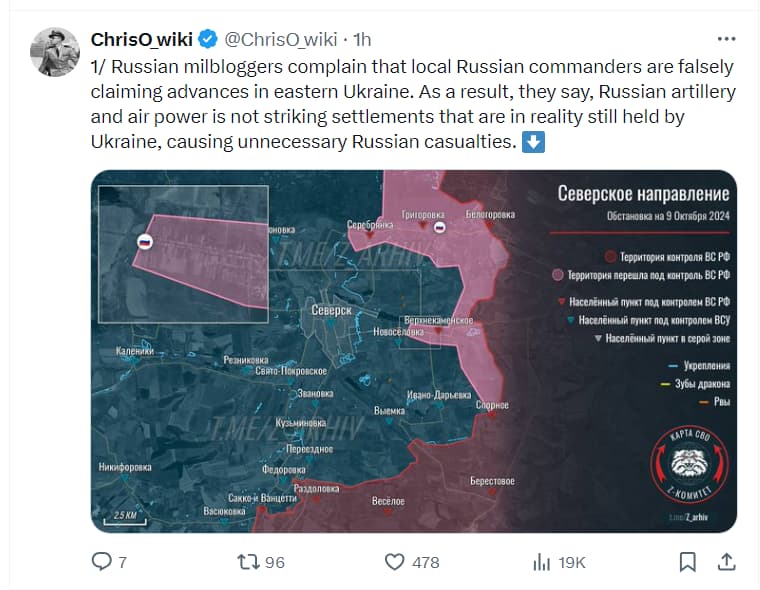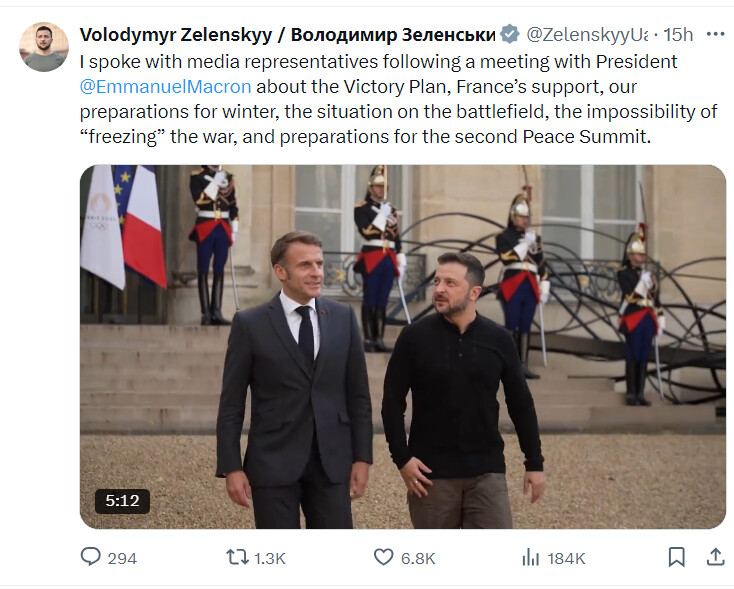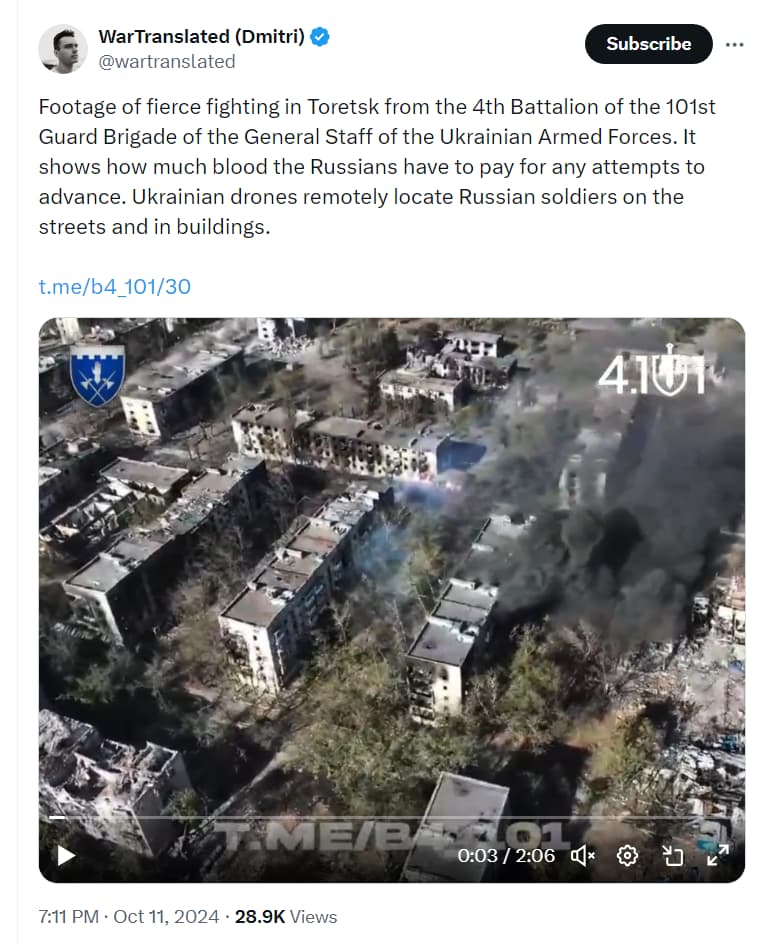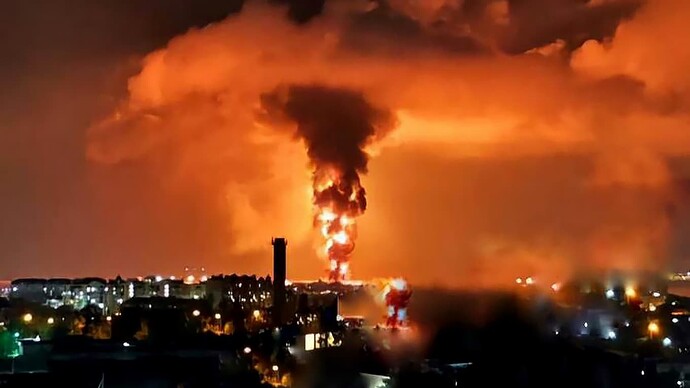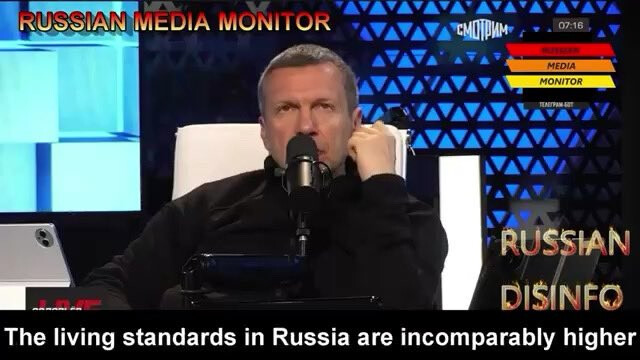
Because we have vodka!
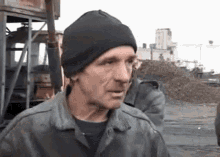

Deliveries of new Lockheed Martin F-35 ‘Lightning’ stealth fighters to the US and allied militaries have resumed after a year-long pause. And on the other side of the world, Korean Aerospace Industries in South Korea is building the first batch of KF-21 stealth fighters.
In Russia, however, production of the Sukhoi Su-57 stealth fighter – Nato reporting name ‘Felon’ – has stalled. And there’s one main reason why.
“It’s clear that Russia’s military industry heavily depends on Western components, particularly in electronics,” explained Frontelligence Insight, a Ukrainian analysis group.
Sanctions put into place by Western governments in the 31 months since Russia widened its war on Ukraine have throttled the supply of this critical hardware. As a result, “production of the Su-57 is in jeopardy,” Frontelligence Insight concluded.
A big, fast fighter with radar-evading qualities, the single-seat, twin-engine Su-57 is Russia’s answer to the United States’ Lockheed Martin F-22 Raptor. It’s meant to replace old Mikoyan MiG-29s and Sukhoi Su-27s and variants in Russian air force service.
The Su-57 first flew in 2010, 20 years after the Raptor – the world’s first fifth generation stealth fighter – first flew. Over the next decade, Sukhoi’s workers hand-built 10 test models. And in 2019, the Kremlin signed a contract for 76 production jets, apparently for around $50 million per copy.
But where Lockheed churns out more than 150 fifth-gen F-35s a year, Sukhoi has struggled to produce a fraction of that number. The Russian firm delivered the first 10 production Su-57s to the air force in 2022 and another 11 in 2023. So far this year, Sukhoi reportedly has handed over just a few additional planes.
And in the meantime, the Russian air force has lost two Su-57s – one test model and a production jet – to crashes. A Ukrainian drone strike on Russia’s Akhtubinsk State Flight Test Center in southern Russia in June destroyed at least one additional Su-57 on the ground.
It’s possible that, 14 years after the type’s first flight, there are slightly more than 30 Su-57s in the Russian inventory, a third of them test models potentially lacking some of the planned electronics. That’s a paltry force for an air arm that deploys around a thousand front-line fighters – and which has lost a hundred of them in action over Ukraine since February 2022.
Strikingly, the delivery rate for new Su-57s seems to have dropped – a lot – between 2023 and 2024. Normally, delivery rates for new fighter types increase year on year for a given multi-year order, as workers gain experience and economies of scale kick in.
The Su-57 is an exception to that rule. It’s apparent that, with targeted sanctions, the United States and its allies have blunted the Russian air force’s modernization.
Scrutinizing Russian documents, Frontelligence Insight discovered some of the main bottlenecks, including an attenuator called the WA36 and power supplies designated PLR7 60-12 and EA-PS 3150. These components are part of the MPPU-50, a German-made device for calibrating the communications systems on the Su-57.
Where once Sukhoi could legally import MPPU-50s and parts for MPPU-50s, now it must acquire them illicitly from third parties. “Considering that Russian military production continued to expand in 2023 and 2024, it’s clear that they find ways to smuggle key components or purchase Chinese replacements to maintain production,” Frontelligence Insight noted.
But the illegal importation takes time, effort and money – and has slowed the production rate for new Su-57s and likely increased the per-plane cost.
As long ago as 2020, at least one Russian commentator was urging the Kremlin to reconsider its aviation modernization plan. “Instead of trying to make a dozen ‘gold’ Su-57s over the course of several years, you can replace the old [MiG-29s] with new MiG-35s” – an updated MiG-29 – “with modern avionics, excellent weapons and the Zhuk radar with an active phased array,” the commentator wrote for VPK, which covers the Russian defense industry.
“In addition, the MiG-35 has become more economical, which is also of great importance,” the commentator added. The case against the Su-57, and for renewed production of older and simpler jet types, is even stronger now that Russian industry is struggling to source critical foreign components.
But even a Russian pivot to less sophisticated fighters would represent a kind of victory for Russia’s foes. The Su-57 program was supposed to help the Russian air force catch up to the US Air Force. But it’s taking so long for Sukohi to build a tiny number of Su-57s that the Americans are actually pulling farther ahead, technologically speaking.
The US Air Force is already defining requirements for a new stealth fighter to replace its 180 F-22s. This new Next Generation Air Dominance fighter could take flight before the Russians finally take delivery of the 76th and last Su-57 from that initial production order.
Russian losses per 11/10/24 reported by the Ukrainian general staff.
+1140 men
+8 tanks
+35 AFVs
+59 artillery pieces
+4 MLRS
+1 helicopter
+70 UAVs
I thought it was good as well. If all true that is.
2/ A few days ago, Russian pro-war Telegram channels reported that there had been “significant advances of the Russian Armed Forces near Siversk in recent days.” The villages of Hryhorivka and Verkhnokamianske were said to have been captured and a foothold taken at Serebrianka.
3/ However, Russian milbloggers now admit that these claims were false. The ‘Military Informant’ channel says: "It is reported that the appearance of data on non-existent advancement was connected with manipulations of the local leadership, …
4/ …which was engaged in “flag-sticking” where there were no real major successes of the Russian Armed Forces, with the aim of forming fictitious media victories and sending victorious reports to the top."
5/ In a more detailed report, Rybar comments that the claims of advances “have nothing to do with reality.” "Some resources managed to report that at the Belogorivka-Hryhorivka line, Russian troops allegedly managed not only to advance significantly, …
6/ …but also to take half of Serebrianka. Today’s video of the raising of the flag on the outskirts of Hryhorivka is given as evidence."
7/ According to Rybar, “A group of several fighters moved through a narrow strip of “greenery” on the southern bank of the Siverskyi Donets and planted that very flag, after which they retreated to their original positions. There is no talk of any control over this area yet.”
8/ The channel points out that the terrain along the Siverskyi Donets river is extremely difficult, with gullies, ravines and numerous craters, and Ukrainian defences are strong in the area. Bilohorivka, on the western side of the river, is still under complete Ukrainian control.
9/ Rybar adds that “Russian stormtroopers can reach isolated buildings on the eastern outskirts of the settlement, but this can often be called a “one-way route”.”
10/ “Thus, the advances of the Russian Armed Forces near Hryhorivka are extremely local in nature and were achieved as a result of extremely heavy fighting and at no small cost.”
11/ False reporting by local Russian commanders has been a constant feature of the war in Ukraine. It has undoubtedly had adverse effects. Commanders have falsely reported capturing Ukrainian positions, then sacrificed numerous troops in assaults to try to make it true.
12/ Rybar notes other consequences: "A false report on the capture of a particular location not only misinforms the higher command and contributes to the adoption of erroneous decisions, but also cuts off its own combat capabilities.
13/ "First of all, this concerns the work of “large calibers”, such as [glide bombs]. If you “paint over” the notionally captured Verkhnokamianske without establishing real control, then an air strike on targets inside the village from above will simply not be coordinated.
14/ "And really, why strike a village that is already in our rear on the map? But nobody has removed the tasks of advancing further to Siversk, so the troops have to “catch up” with false reports and liberate what is already ours on paper.
15/ "But this has to be done without using “large calibers” for the same destruction of enemy strongholds. That is, such “fake” reports lead to a decrease in the ability to inflict fire damage in the interests of the advancing group.
16/ "And this, in turn, entails losses of personnel and equipment. Which, contrary to the beliefs of some people, tend to run out very quickly when used thoughtlessly.
17/ “Therefore, comrades who justify such situations as being “competent information warfare” are somewhat in a parallel world. Realities are still completely different, and the price of fraudulent reports of success is the lives of our people.” /end
Looks very similar to a M109 Paladin.
Be nice to test his theory
Will oil decide the fate of the Russia-Ukraine War?
A collapse in global oil prices could pose a significant risk to Putin’s war machine
11.10.2024
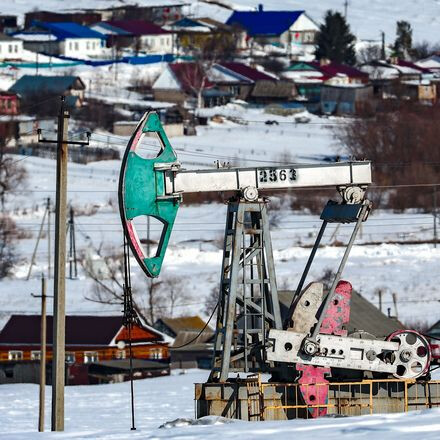
Pumpjacks extract oil from a well operated by Elkhovneft, a subsidiary of Tatneft, one of the largest Russian national oil and gas producers.
Saudi Arabia’s decision to increase oil supply at a time of falling global demand could jeopardise the Russian war effort. With Russia already selling its oil at discounted rates and with higher production costs, a low-price environment in oil markets may impact its ability to finance its aggression in Ukraine.
Russia and Saudi Arabia have previously clashed in oil markets. For a brief one-month period at the outset of the Covid19 pandemic, Russia launched a foolish price war, increasing production as the world moved into lockdown. Once Saudi Arabia responded in kind, the oil price went into freefall. In an illustration of how geopolitics ‘overdetermines’ oil markets, the trigger for the negotiations that brought the crisis to an end was allegedly US President Donald Trump’s threat to withdraw American military assistance from Saudi Arabia. Under this geopolitical pressure and collapsing market demand, making a price war potentially ruinous for all parties, Russia and Saudi Arabia stepped back, agreeing to the supply cuts required to stabilise world prices.
As recounted in Cambridge professor Helen Thompson’s Disorder: Hard Times in the 21st Century, the oil supply glut in 2014 – 2016 was also shaped by the competitive postures of the United States, Russia and Saudi Arabia. Then as now, Saudi Arabia increased the supply of oil into the world market at a time of falling demand with the economic aim of disincentivising American investment in shale oil and the geopolitical aim of pressuring Russia and Iran to retreat from their support for the Assad regime in Syria. That Russia was able to weather the financial crisis produced by the combination of Western sanctions and the Saudi expansion in oil supply, emerging with the Assad regime intact and Russia’s hold on occupied southern and eastern Ukraine stable, provides a salutary warning for the hope that the present conjuncture may prove problematic for Putin’s regime. But with Russia facing both much more radical external sanctions – in effect its near-removal from the Western trade and financial order altogether – and fighting an enormously costly all-out-war against Ukraine, the conjuncture of late 2024 poses a far more serious challenge.
The limits of military Keynesianism
Trends in the global oil market bear down heavily on Russia’s strategic choices. By 2030, the International Energy Agency anticipate that global supply capacity will outstrip demand by some 8 million barrels per day, a situation they describe as ‘staggering’ and ‘unprecedented’ (outside of the Covid19 pandemic). As Iran and the Gulf States have oil wells close to the surface, making them cost efficient to extract from, these states are in a much more commercially advantageous position to cope with falling oil prices. Their breakeven price for new drilling projects is also far lower than that of their international competitors, including Russia and the United States.
By moving towards a more competitive posture, Saudi Arabia is challenging America’s more expensive production but also tacitly acknowledging that the OPEC+ group have a diminished price setting power. For Russia, this is the worst of both worlds. Unlike the United States, it has an oil dependent economy, which benefits from the cartel power of OPEC+. Yet, unlike Saudi Arabia, its oil is not cheap to extract, making it poorly equipped to deal with low-price conditions. This drives a short-term escalatory logic for Russia’s war on Ukraine, requiring rapid battlefield successes prior to the emergence of low-price oil market conditions.
With oil accounting for between 30-50 per cent of annual state budget revenues since 2014, Russia is, fundamentally, a petrostate.
Russia’s successful adaption of its domestic economy to the war effort has been an important story of the full-scale invasion to date. The Russian state has utilised a suite of policies that Volodymyr Ishchenko, Ilya Matveev and Oleg Zhuravlev identify as ‘military Keynesianism’, with war-related spending stimulating demand in the economy. They note, in particular, the important distributional effects of this in terms of wage growth and industrial expansion, how this may have impacted support for the war-effort among the Russian working classes and the internal limits that these policies have encountered in the form of acute labour shortages constraining economic output.
Putting the Russian war economy in a global context which recognises its oil dependency can help us build a fuller picture of its vulnerabilities. While sanctions have ruptured Russia’s relationship to Western markets, this does not make its war economy autarchic. On the contrary, revenues from oil exports are critical. As the Oxford Institute for Energy Studies has argued, the Russian economy is dualistic in the sense that it may be divided between revenue generating sectors (of which the most important is oil) and revenue dependent sectors that are sustained through the distribution of rents. With oil accounting for between 30-50 per cent of annual state budget revenues since 2014, Russia is, fundamentally, a petrostate. The Putin regime manages these rents and has drawn on them to fund military aggression in Ukraine.
While Russia has not been publishing trade data since the full-scale invasion, estimates from Bruegel suggest that, despite its successful application of military Keynesian instruments, it continues to fund its trade deficit in non-fossil fuel goods through the sale of fossil fuels (delivering an overall surplus). As these imports are necessary to meet the needs of the Russian populace and the state’s war effort, maintaining the flow of oil rents is critical.
Russia has faced rising costs while selling to markets at a discounted rate (advantaging non-Western buyers in general and India and China in particular).
Russia’s oil is therefore both a source of power that has funded its war of aggression and a potential vulnerability, due to its sensitivity to movements in the global market price. The full-scale invasion has led to sanctions increasing the regime’s production costs, a collapse in Western demand with the move to alternative suppliers and a price cap on oil sales. So, Russia has faced rising costs while selling to markets at a discounted rate (advantaging non-Western buyers in general and India and China in particular). The country has been able to adapt to these changes but was not yet forced to face a situation of global oil supply running in excess of demand.
A peculiarity of a state’s uneven and combined development lies in the role that ‘far away’ events may play in shaping its geopolitical and economic trajectory. This can be seen in the series of contingencies involving multiple actors and theatres of conflict that will likely determine whether Russia will continue to sell oil at the price needed to fund its war effort: the scale of demand for oil given the green transition, especially in China that in 2023 accounted for four-fifths of global demand growth; how aggressively Saudi Arabia seeks to expand the global supply to seize market share from their rivals; and whether Israel and Iran step back from the brink of all-out-war, which, in one scenario, could see the Strait of Hormuz, ‘the world’s most important oil chokepoint’, become a site of conflict. If these factors evolve in such a way as to produce an oil price collapse that is equivalent in scale to 2014 – 2016, the Russian regime may encounter difficulties financing its war economy, at least in the distributionally ‘progressive’ form vis-à-vis its workers.
[Jet Fire at Crimea Oil Terminal Extinguished 5 Days After Ukraine Strike
3 hours ago
A jet fire at a major oil terminal in the port city of Feodosia in Russian-annexed Crimea has been put out five days after Ukrainian missile strikes there, its Russian-installed Mayor Igor Tkachenko said Friday.
“As of 8 a.m. there’s no jet fire on the territory of the oil terminal,” Tkachenko wrote on Telegram, saying “the situation has stabilized and is fully under control.”
“Emergency services and our municipal enterprises are continuing emergency recovery work. It will continue until complete liquidation,” Tkachenko added.
His assurances come hours after Crimea’s Russian-installed Governor Sergei Aksyonov reported a “release of combustible materials” overnight after residents said they heard an explosion.
Tkachenko assured nearby residents that air quality posed no threat despite locals’ complaints of nausea and headaches and the local consumer protection watchdog reporting high levels of sulfur dioxide near the flames.
Ukraine’s military said Monday its missile forces had carried out a successful strike on the Feodosia offshore oil terminal, the largest on the Crimean peninsula in the Black Sea. More than 1,100 people were evacuated as the flames spread to more than 2,500 square meters.
Media reports linked the oil terminal to President Vladimir Putin’s university friend Viktor Khmarin, who was said to be the beneficiary of a company that bought it in 2019 after its nationalization by Russia’s occupational authorities.
Russia annexed Crimea from Ukraine in 2014.
no, no, it’s a ‘promise’
with a better gun system and barrel.
I thought it was a quote from The Hunt For Red October.

